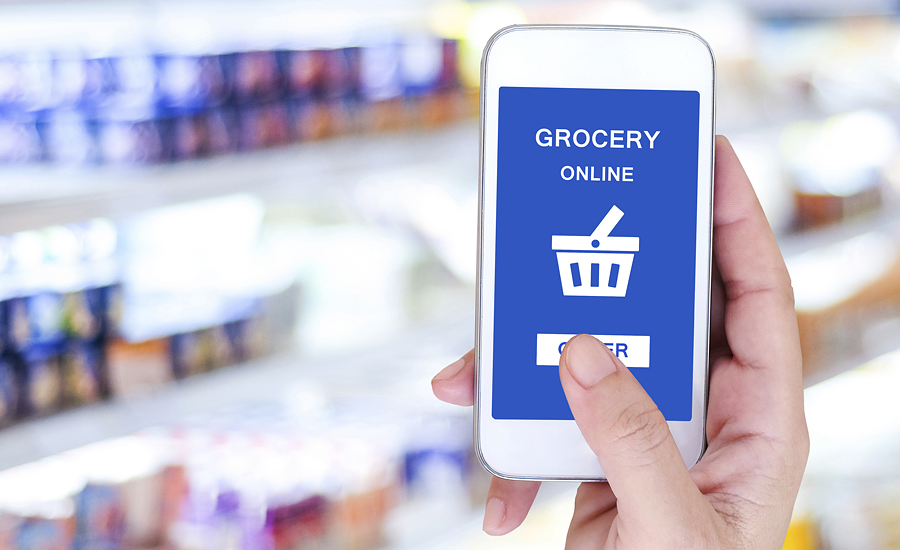As 2020 approaches, consumer packaged goods (CPGs) need to know the trends shaping the industry. AnswerRocket, Atlanta, reveals the Top 11 trends changing the CPG landscape.
1. CPGs will take advantage of AI and machine learning to inform decisions.
It’s estimated that artificial intelligence (AI) and analytics could add as much as $13 trillion to total output by 2030, increasing the annual rate of global GDP growth by more than one percentage point, according to this report published by the McKinsey Global Institute, Chicago. These projections for 2030 are rooted in AI advancements that have already started. CPGs will continue to invest in AI in 2020, specifically in regards to decision-making.
AI and machine learning are revolutionizing the way CPGs can use data to make business decisions. CPGs are combining first-party data with syndicated sources, and to make the most of these investments, will look to advanced technology like AI to uncover actionable insights. In other words, CPGs have tons of data at their fingertips; now, they need help understanding what the data can tell them about how to find growth and what actions they should take to drive the business.
AI provides CPGs with fast data analysis that generates actionable insights, all without the help of a data analyst. Machine learning algorithms can identify performance drivers from hundreds of thousands to millions of data points, so CPG professionals know which factors most impacted their results.
In 2020, CPGs will continue to invest in AI-driven analytics. AI pinpoints the “why” in the data, so decision-makers know where to focus their efforts for the best ROI. Even now, CPGs can leverage AI to understand brand health, market share, trends, performance and “what if” scenarios. The use cases for AI will continue to grow, and CPGs will become more comfortable with the automation enabled by this technology.
2. Innovations are expensive endeavors for CPGs.
To succeed, CPGs need to move quickly and accurately; once a new product hits the shelves, there’s a very short window to adjust strategy to either course-correct or capitalize on opportunities. In 2020, CPGs who invest in AI-powered analysis can reap significant rewards. First, AI can assist with innovation planning by helping CPGs identify growing segments. Second, centralized analytics can assist with cross-functional collaboration by assembling relevant data from every department into a single source of truth. Once innovations are launched, AI provides CPGs with a fast and deep understanding of performance. It takes time to build distribution, and AI can help fill in the gaps without sacrificing the quality of the analysis. CPGs who leverage AI for innovations can be more agile, acting during the launch instead of waiting until year-end to get a report on performance, essentially leaving money on the table.
3. The role of CPG category managers will shift.
In 2020, retailers will be well-equipped with syndicated data sources, and have invested in their own data scientists and analysts who build reports and generate insights. As a result, retailers are looking for new insights that they can’t produce themselves. CPG category managers can fill in that gap and bring new value to the table. Category managers can, for example, leverage data sources across marketing channels. By engaging in social listening, category managers can better understand how consumers talk about products and adjust their strategies accordingly. This kind of analysis will become more critical to the category manager role as retailers continue to invest in their own analytics resources.
4. Teams of data analysts will go deeper.
With limited time and resources, teams of data analysts are often backlogged in routine reporting tasks. The process of answering business questions is tedious; data analysts must pull data from multiple sources, merge the data and test hypotheses until they come to a conclusion or run out of time. In 2020, this process will be automated by AI analytics, which automates the tedium of data analyses by pulling the right data, testing every hypothesis and returning actionable insights in seconds. Plus, AI doesn’t work off a set of assumptions. With unbiased analytics tools, data analysts don’t have to heed anecdotes, pre-conceived notions or gut feelings in their analysis. Data analysts who leverage AI can offload routine reporting and instead act as consultants, using the answers they receive to help guide business people to the right strategy. With more time to dedicate to high-level analysis, data analysts can provide deeper insights, participate actively in key business decisions and ultimately provide more value.
5. Consumer expectations will continue to rise.
AI is impacting the consumer experience across a number of industries. Consumers expect speed, convenience and personalization, fast delivery on online orders, frictionless apps and convenient online experiences. So, how do these expectations impact CPGs?
To keep up, CPGs are launching unique and creative campaigns to engage consumers. From in-person, Instagram-worthy pop-ups to augmented reality apps, CPGs aren’t just competing against each other, but with the rising expectations of consumers across the board.
6. Digital CPG channels will require simplicity and convenience.
Online shopping is nothing new, but CPGs are still refining and innovating the e-commerce experience. One of the trickiest aspects of e-commerce is the need to balance consumer engagement with simple purchasing pathways.
Simple, direct purchasing paths are critical for CPGs because consumers typically know exactly what they want. Even when tools are available to compare products and pricing, shoppers still value simplicity more. As such, CPGs can take advantage of brand loyalty and optimize for simple purchasing pathways. Those who create a frictionless shopping experience can provide great value to consumers and gain an advantage in e-commerce
7. Citizen data scientists will supercharge organizations.
Augmented analytics has enabled citizen data science across organizations. With natural language querying, business people can ask questions in plain English and get answers that don’t require interpretation from a technical employee. Instead of waiting on reports from analysts, business people can get the answers they need on their own— in seconds. As such, citizen data scientists are business people who use self-service analytics software to generate insights that inform decision-making. Citizen data scientists work in tandem with data analysts to streamline decision-making. When decision-makers get the insights they need directly, they can understand brand performance in the context of the market, act quickly and set strategies with the best possible ROI. CPGs who don’t consider the value of self-service analytics and citizen data science may be left behind the curve in 2020. The speed that citizen data science affords means CPGs can get ahead of trends and move faster than the competition.
8. CPGs must prepare for data privacy laws.
It seems that data privacy laws aren’t a passing trend. With new laws like the California Consumer Privacy Act (CCPA), it’s clear that the General Data Protection Regulation (GDPR) in the European Union has influence and staying power. As CPGs strive for personalization in marketing, they must also consider the growing importance of data privacy, both legally and in light of consumer demands.
To solve for these concerns, data security and privacy must be prioritized. Larger shifts are occurring to data and analytics teams as citizen data scientists and advanced analytics disrupt traditional workflows. CPGs with data and analytics teams should consider funneling employee resources into data strategy and governance (since AI can manage reporting and insights). Only with dedicated efforts can CPGs prepare for and mitigate the risks of data privacy challenges.
9. CPGs will invest more in packaging and design.
In a survey of 250 brand owners across the CPG spectrum, conducted by L.E.K. Consulting, Boston, 75% say they expect to increase packaging spending over the next year. Case in point: CPGs are seeing packaging and design as increasingly important differentiators on the shelf, especially for premium products. Plus, with the rise of e-commerce, CPGs must consider the unique packaging needs of products that will be shipped to consumers. Smart packaging, for example, is a growing area of interest.
A Deloitte survey of industry leaders found many are considering smart packaging to transform supply chains, integrity and customer experience. These packaging systems can monitor temperature, limit spoilage, extend shelf life, detect contamination and track a product from origin to final delivery. Of course, other trends, like sustainability, impact CPG packaging, as consumers ditch plastic in favor of environmentally friendly alternatives
10. Small brands will continue to challenge incumbents.
Small brands and companies have opportunities to innovate in mainstay categories and capture growth, as long as they can identify the products that have grown stale to consumers. In particular, new brands thrive with good brand storytelling, design and socially conscious messaging because they’re offering something different to consumers. Legacy brands must keep a close eye on market share in 2020 to ensure they aren’t losing growth to small but powerful disruptors. Likewise, smaller brands can accelerate in this market, if they find the right formula.
11. Purpose-driven brands will gain favor with consumers.
Consumers care about purpose. They care about the values a brand promotes. In 2020, values won’t just be a marketing tactic that’s slapped on top of a brand, but an integral part of brand messaging. This trend isn’t necessarily about corporate social responsibility or a company’s political and social leanings. Rather, purpose-driven brands should be authentic, relevant and substantial, not tied to the latest cause.



